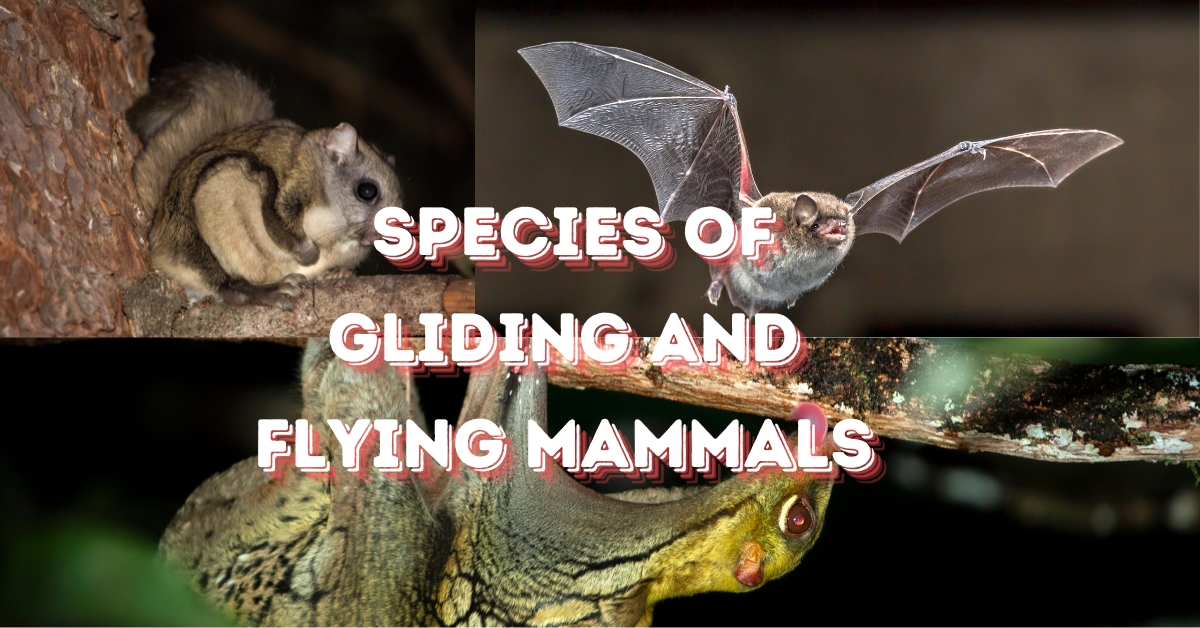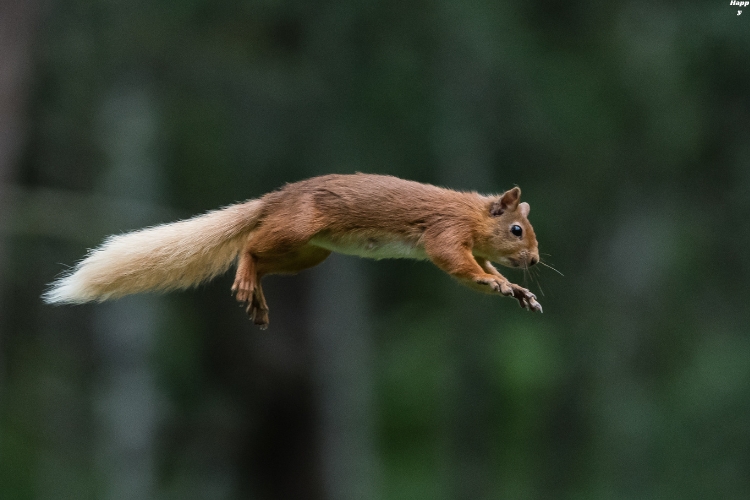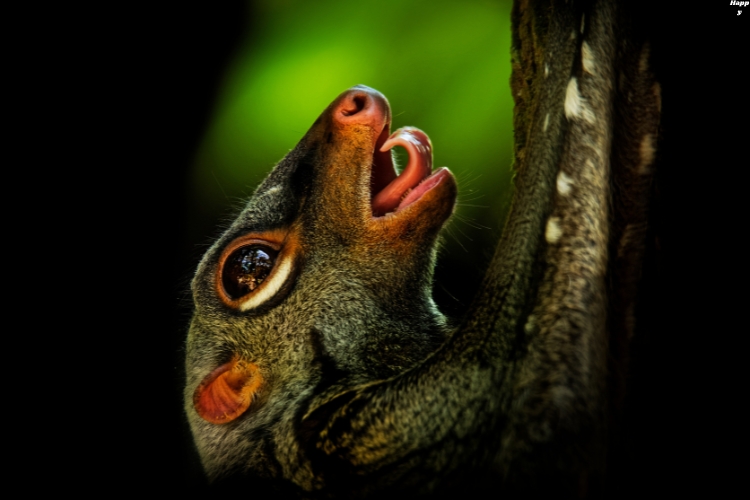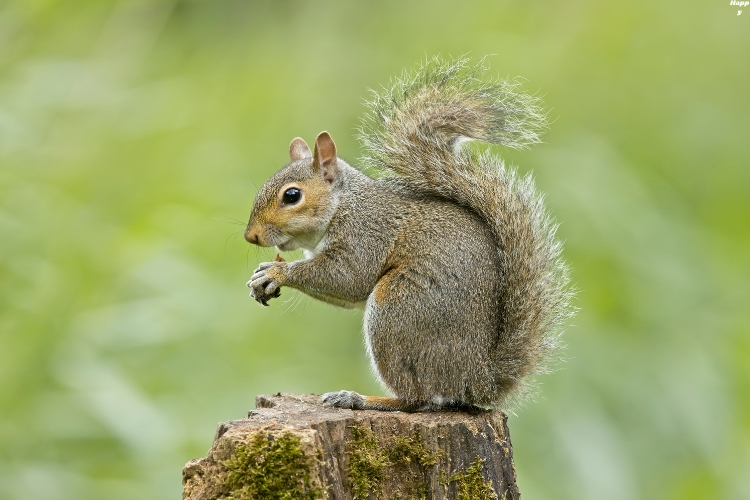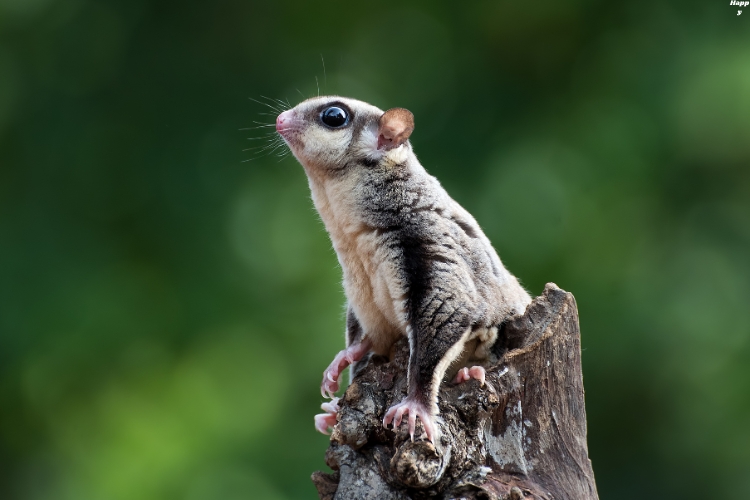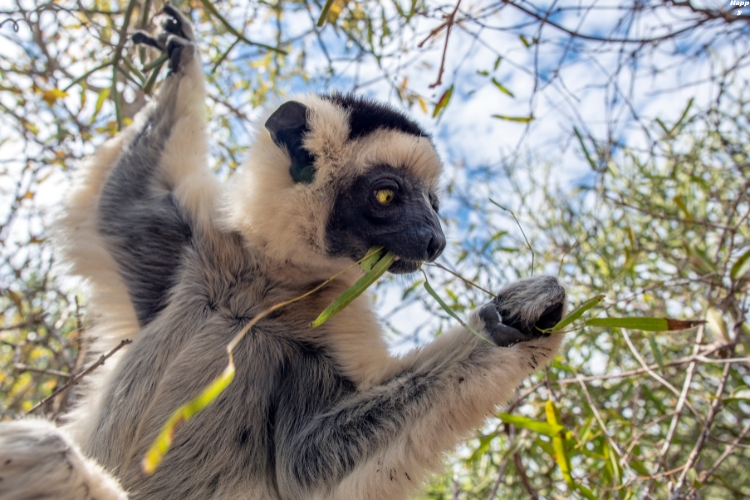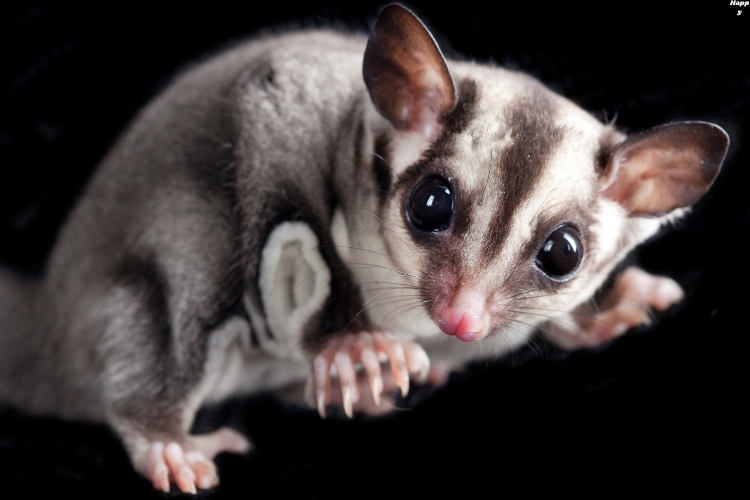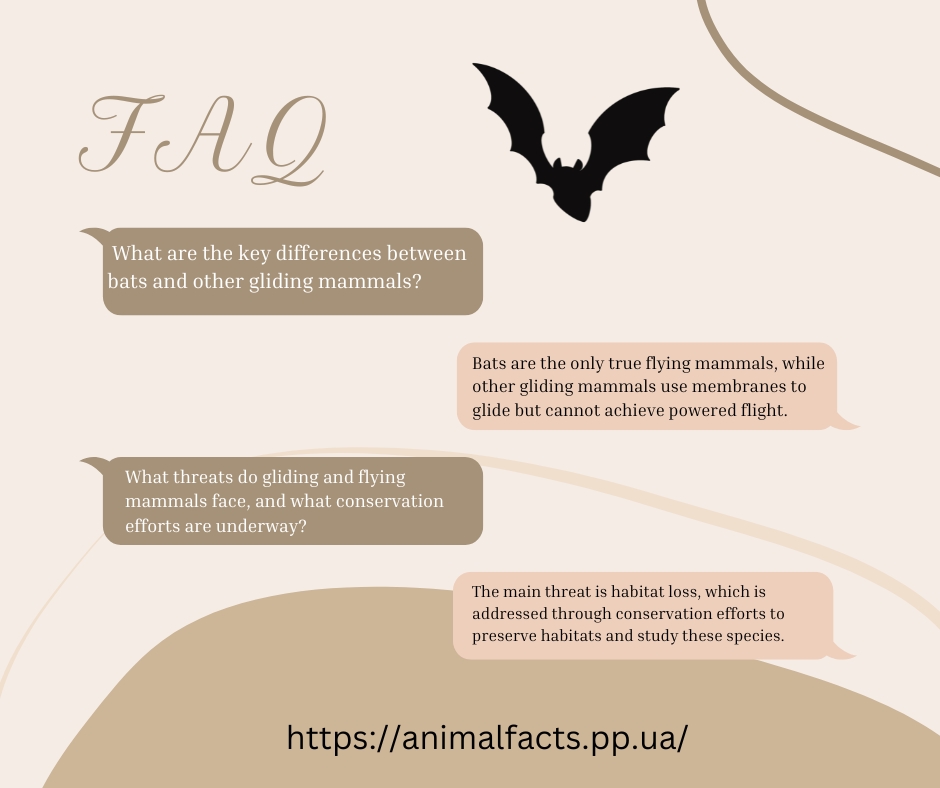The natural world is filled with an incredible diversity of life, and among the most fascinating creatures are the mammals that have evolved the ability to take to the skies.
From the iconic bats to the graceful gliding possums, these remarkable animals have developed unique adaptations that allow them to defy gravity and navigate the air with remarkable skill.
In this comprehensive article, we will delve into the captivating world of gliding and flying mammals, exploring their remarkable abilities, their unique characteristics, and the remarkable evolutionary journeys that have led to their emergence.
Whether you’re a nature enthusiast, a student of biology, or simply someone with a curiosity about the natural world, this article will take you on a captivating journey through the skies, introducing you to some of the most incredible animals on the planet.
The Only True Flying Mammals: Bats
Adaptations for Powered Flight
At the forefront of the gliding and flying mammals are the bats, a diverse order of mammals that have evolved the ability to truly fly.
other gliding mammals, bats possess the unique ability to actively flap their wings, propelling themselves through the air with remarkable agility and speed.
There are over 1,400 species of bats found around the world, making them the second-largest order of mammals after rodents.
Bats come in a wide variety of shapes and sizes, from the tiny bumblebee bat, the world’s smallest mammal, to the massive flying foxes, with wingspans that can exceed 6 feet.
Bats have evolved a range of adaptations that enable their powered flight, including:
- Lightweight, membrane-like wings made of a thin layer of skin stretched between elongated finger bones
- Specialized muscles and tendons that allow for precise control and maneuverability
- Echolocation abilities, using high-pitched sounds to navigate and locate prey in the dark
These remarkable adaptations have allowed bats to thrive in a wide range of habitats, from tropical rainforests to deserts, and to fill a variety of ecological niches, from pollinators to insect-eaters to fruit-eaters.
The Masters of Gliding: Flying Squirrels
Adaptations for Gliding
While bats may be the only true flying mammals, there are several other species that have evolved the remarkable ability to glide through the air.
Chief among these are the flying squirrels, a group of small to medium-sized rodents found in various parts of the world.
Flying squirrels are not capable of true, powered flight like bats, but they have developed a unique adaptation that allows them to glide from tree to tree with remarkable skill.
This adaptation is a patagium, a thin membrane of skin that stretches between their front and hind legs, forming a kind of “wing” that allows them to glide for distances of up to 300 feet.
There are over 50 species of flying squirrels found across North America, Europe, and Asia, each with its own unique characteristics and adaptations. Some key features of flying squirrels include:
- Large, flat tails that help to steer and stabilize their glides
- Specialized wrist and ankle joints that allow for precise control of the patagium
- Excellent night vision and hearing, which help them navigate through the forest canopy
Flying squirrels use their gliding abilities for a variety of purposes, including escaping predators, accessing food sources, and finding mates.
They are remarkable examples of the evolutionary ingenuity of nature, and their graceful glides through the air are a sight to behold.
The Gliding Ghosts of Southeast Asia: Colugos
Adaptations for Arboreal Life and Gliding
Alongside the flying squirrels, another remarkable group of gliding mammals can be found in the forests of Southeast Asia: the colugos, also known as “flying lemurs.”
Despite their name, colugos are not actually lemurs, but rather a distinct order of mammals known as Dermoptera. These elusive creatures are the only members of their order, and they are remarkable for their ability to glide effortlessly through the air.
Colugos possess a large, wing-like membrane called a patagium that extends from their wrists to their ankles, allowing them to glide for distances of up to 200 feet.
They use this adaptation to move quickly between trees, avoiding predators and accessing food sources.
Colugos are arboreal animals, spending the majority of their time in the forest canopy. They have a number of other adaptations that help them thrive in this environment, including:
- Strong, hooked claws that allow them to cling tightly to tree trunks and branches
- Large, forward-facing eyes that provide excellent depth perception and night vision
- A slow, deliberate movement pattern that helps them conserve energy and avoid detection
Despite their remarkable abilities, colugos remain poorly understood, as they are elusive and difficult to study in the wild. However, ongoing research is helping to shed light on these fascinating creatures and their role in the tropical forest ecosystems of Southeast Asia.
The Unique Gliders of Africa: Scaly-tailed Flying Squirrels
Adaptations for Gliding and Arboreal Life
While the flying squirrels and colugos are well-known for their gliding abilities, there is another group of remarkable gliding mammals found in Africa: the scaly-tailed flying squirrels, also known as anomalures.
These small, rodent-like creatures are found in the forests of West and Central Africa, and they possess a unique adaptation that sets them apart from other gliding mammals: a specialized, scaly membrane on their tails that helps to stabilize their glides.
Scaly-tailed flying squirrels use their large, fluffy tails and their wing-like membranes to glide between trees, sometimes covering distances of up to 150 feet. They use this ability to escape predators, access food sources, and even travel between nesting sites.
In addition to their gliding abilities, scaly-tailed flying squirrels have a number of other adaptations that allow them to thrive in the dense, tropical forests of Africa, including:
- Sharp claws and strong grip that allow them to cling to tree trunks and branches
- Large, forward-facing eyes that provide excellent night vision
- A diet that includes a variety of nuts, fruits, and insects
Despite their impressive abilities, scaly-tailed flying squirrels remain relatively unknown to the general public, as they are small, elusive, and primarily active at night.
However, ongoing research and conservation efforts are helping to raise awareness of these remarkable creatures and the importance of preserving their forest habitats.
The Tiny Glider from Australia: Feathertail Glider
Adaptations for Gliding and Survival
While the larger gliding mammals such as flying squirrels and colugos are impressive in their own right, there is one species that stands out for its diminutive size and remarkable agility: the feathertail glider.
Found in the forests and woodlands of eastern Australia, the feathertail glider is the smallest gliding mammal in the world, weighing in at just 10-15 grams (roughly the weight of a AAA battery).
Despite its tiny size, this remarkable creature is capable of gliding distances of up to 50 meters, using a specialized membrane between its front and hind legs to soar through the air.
The feathertail glider’s name comes from its distinctive tail, which is covered in fine, feather-like hairs that help to stabilize its glides.
This, along with its large, webbed feet and streamlined body, make the feathertail glider an exceptionally agile and maneuverable glider, able to navigate through the dense forest canopy with ease.
In addition to their gliding abilities, feathertail gliders have a number of other adaptations that allow them to thrive in their environment, including:
- Excellent night vision and hearing, which help them to navigate and locate food sources in the dark
- A diet that includes a variety of insects, pollen, and nectar
- The ability to enter a state of torpor, similar to hibernation, to conserve energy during periods of food scarcity
Despite their small size and elusive nature, feathertail gliders play an important role in the ecosystem, serving as pollinators and helping to disperse seeds throughout the forest.
They are a true wonder of the natural world, and a testament to the incredible diversity of life on our planet.
The Largest Gliding Mammal: Greater Glider
Adaptations for Life in the Eucalyptus Forests
While the feathertail glider may be the smallest gliding mammal, the title of the largest goes to the impressive greater glider.
Found in the eucalyptus forests of eastern Australia, the greater glider is a remarkable creature that can soar through the air with ease.
With a body length of up to 45 centimeters (18 inches) and a weight of up to 2 kilograms (4.4 pounds), the greater glider is the largest gliding mammal in the world.
Like other gliding mammals, it possesses a specialized membrane called a patagium that extends between its front and hind limbs, allowing it to glide for distances of up to 100 meters (330 feet).
The greater glider’s impressive size and gliding abilities are just the beginning of its remarkable adaptations. It has a highly specialized diet, feeding almost exclusively on the leaves and buds of various eucalyptus tree species. To aid in this, it has evolved a number of other unique features, including:
- Specialized teeth and digestive system that allow it to break down the tough, fibrous eucalyptus leaves
- Large, forward-facing eyes that provide excellent night vision for navigating the forest canopy
- Fur that is specially adapted to insulate it from the cold, as it lives in temperate forest habitats
Despite their impressive size and abilities, greater gliders are relatively shy and elusive, preferring to remain high up in the forest canopy.
They are also facing a number of threats, including habitat loss and fragmentation, which has led to their classification as a vulnerable species.
The Leaping Lemurs of Madagascar: Sifaka
Adaptations for Leaping Through the Trees
While the gliding mammals we’ve discussed so far are remarkable in their own right, there is one species that stands out for its unique method of aerial locomotion: the sifaka, a type of lemur found only on the island of Madagascar.
Sifakas are primates, and they are not capable of true gliding or powered flight like bats. However, they have developed a remarkable ability to leap between trees, covering distances of up to 10 meters (33 feet) in a single bound.
To accomplish this, sifakas have evolved a number of adaptations, including:
- Long, powerful hind limbs that allow them to generate the force necessary for their impressive leaps
- A flexible hip joint that enables them to twist and turn in the air, allowing for precise control and landing
- A dense, fluffy coat of fur that helps to provide stability and control during their aerial maneuvers
Sifakas use their leaping abilities for a variety of purposes, including escaping predators, accessing food sources, and moving between different areas of their forest habitat.
They are well-known for their unique, sideways-hopping gait, which they use to move across the ground when they’re not leaping between trees.
Despite their remarkable abilities, sifakas are classified as endangered due to habitat loss and fragmentation in their native Madagascar.
Conservation efforts are underway to protect these fascinating primates and the unique ecosystems they call home.
The Gliding Possums of Australia and New Guinea: Petaurus
Adaptations for Gliding and Arboreal Life
The final group of gliding mammals we’ll explore are the Petaurus, a genus of gliding possums found in Australia and New Guinea.
These remarkable creatures are not true possums, but rather a distinct group of marsupials that have evolved the ability to glide through the air.
Like other gliding mammals, Petaurus possesses a specialized membrane called a patagium that extends between their front and hind limbs, allowing them to glide for distances of up to 100 meters (330 feet).
There are several species of Petaurus, each with its own unique characteristics and adaptations:
- Sugar Glider: The most well-known and widely distributed Petaurus species, known for its small size and agile gliding abilities.
- Squirrel Glider: A slightly larger Petaurus species that is found in eastern Australia, with a distinctive dark stripe across its face.
- Mahogany Glider: A rare and endangered Petaurus species found only in a small region of northeastern Australia, with a beautiful reddish-brown coat.
In addition to their gliding abilities, Petaurus possess a number of other adaptations that allow them to thrive in their arboreal habitats, including:
- Sharp claws and flexible joints that enable them to cling to tree trunks and branches
- Excellent night vision and hearing, which help them navigate and locate food sources in the dark
- A diet that includes a variety of insects, nectar, and tree sap
Despite their impressive abilities, many Petaurus species are facing threats such as habitat loss and fragmentation, as well as the introduction of invasive predators.
Conservation efforts are underway to protect these remarkable gliding possums and the unique ecosystems they call home.
Conservation Efforts and Threats
1. Habitat Loss and Fragmentation
The gliding and flying mammals we’ve explored in this article are truly remarkable, and they represent just a small fraction of the incredible diversity of life on our planet.
However, many of these species are facing a range of threats that jeopardize their long-term survival.
Habitat loss and fragmentation are perhaps the greatest threats facing gliding and flying mammals.
As human development continues to encroach on natural areas, these species are losing the forests, woodlands, and other habitats they rely on to thrive.
This can lead to population declines, genetic isolation, and increased vulnerability to other threats.
2. Invasive Predators and Climate Change
In addition to habitat loss, many gliding and flying mammals also face threats from invasive predators, climate change, and human-wildlife conflict.
For example, the introduction of cats, foxes, and other predators to the ecosystems of Australia and other regions has had a devastating impact on local gliding mammal populations.
3. Conservation Initiatives
However, there are also many conservation efforts underway to protect these remarkable creatures.
Organizations around the world are working to preserve and restore the habitats of gliding and flying mammals, while also educating the public about their importance and the threats they face.
For example, in Australia, the Greater Glider Conservation Project is working to protect the habitat of the greater glider, while also studying the species’ ecology and behavior to inform more effective conservation strategies.
In Southeast Asia, efforts are underway to study and protect the elusive colugo, with the goal of better understanding these unique gliding mammals and the ecosystems they inhabit.
Conclusion: Marveling at the Incredible Adaptations of Gliding and Flying Mammals
The Awe-Inspiring Abilities of Gliding and Flying Mammals
As we’ve seen in this article, the gliding and flying mammals of the world are truly awe-inspiring.
From the powerful, flapping flight of bats to the graceful, gliding leaps of the sifaka, these creatures have evolved a remarkable array of adaptations that allow them to defy gravity and navigate the skies with ease.
Each of the species we’ve explored represents a unique and fascinating chapter in the evolutionary story of life on our planet.
They have developed these remarkable abilities over millions of years, driven by the constant need to find food, escape predators, and access new habitats.
The Importance of Conservation
But these gliding and flying mammals are more than just evolutionary marvels – they are also integral components of the ecosystems they inhabit.
As pollinators, seed dispersers, and insect-eaters, they play vital roles in maintaining the health and balance of the forests, woodlands, and other habitats they call home.
Unfortunately, many of these remarkable creatures are facing a range of threats, from habitat loss and fragmentation to the introduction of invasive predators.
But through dedicated conservation efforts and public education, we can work to protect these amazing animals and ensure that they continue to soar high, inspiring wonder and awe in all who witness their remarkable abilities.
Appreciating the Natural World
So, the next time you catch a glimpse of a gliding squirrel or hear the flapping of bat wings in the night, take a moment to marvel at the incredible adaptations that have allowed these mammals to take to the skies.
They are a testament to the incredible diversity and resilience of life on our planet, and a reminder of the importance of preserving and protecting the natural world for generations to come.

